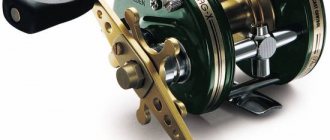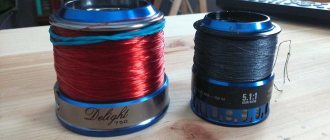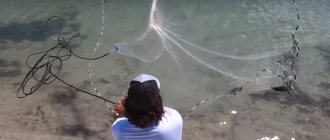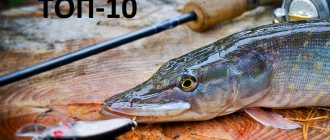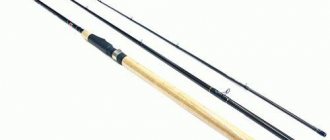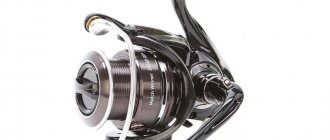| Place | Name | Characteristics in the rating |
| Best Inexpensive Braided Cords |
| 1 | ALLVEGA Ultimate (135m) | Optimal balance of characteristics |
| 2 | SIWEIDA TAIPAN SENSOR PE BRAID X4 | Best price |
| 3 | Spiderwire EZ Braid (137 m) | The most affordable branded fishing line |
| 4 | YO-Zuri PE SUPERBRAID (135 m) | High tensile strength |
| 5 | AQUA PE ULTRA ELITE (135 m) | The best domestic braid |
| The best braided cords in the mid-price segment |
| 1 | Sufix Matrix Pro (250 m) | The best combination of price and quality |
| 2 | Duel PE Hardcore X8 (150 m) | Multifunctional braid. The most elastic |
| 3 | Stinger PowerLine 125m Multicolor | The optimal choice for long casts. Best price |
| 4 | Kosadaka Infinity 150m | High sensitivity and strength of the cord |
| 5 | Momoi Fishing JigLine Ultra PE (150 m) | Wide range of thicknesses and colors |
| The best premium braided lines |
| 1 | Sufix 832 Braid (135 m) | Best price |
| 2 | Power Pro Moss Green (275 m) | Best cord quality |
| 3 | Duel PE SUPER X-WIRE 8 (150 m) | High reliability parameters |
| 4 | Varivas Avani Sea Bass PE Sensitive Fullcast (200 m) | The most sensitive braid |
| 5 | Sunline SM PE EGI ULT HS8 HG (120 m) | The most versatile cord |
Rules for choosing braid for a spinning fishing rod
Every fisherman who is a fan of spinning rods should remember that to choose one universal cord for fishing. Sometimes even experienced fishermen have difficulty choosing the right option. And for beginners it is even difficult to figure out which braided cords to choose. This happens for the reason that today there is no unified classification of fishing lines . And manufacturers cannot make the process of making cords more streamlined. As a result, numerous options are presented on store shelves, among which it is difficult for buyers to choose the ones suitable for their spinning rods .
When purchasing, it is recommended to pay attention to fishing conditions. This will allow you to determine the approximate parameters of what type of fishing line may be required.
braided cord options on the market. They may differ from each other by standard characteristics:
- Diameter;
- Length of skein in reel;
- Color.
You can choose according to various criteria.
Reel and cord for microjigging
Rods, baits, weights, hooks, leashes, etc. - all this is very important in microjig. But the reel and cord are also important. For those who are not yet firmly in the microjig topic, this material was conceived.
About the coils.
The requirements for reels in microjig and, in general, ultralight are very high, by the way.
After all, here the ability to work reliably with thin cords and small baits, and to cast compact and lightweight rigs accurately and as far as possible comes to the fore. And the reel must certainly be combined with the fishing rod used (almost always light) and in no case introduce an imbalance. In connection with the above, one of the first things you should pay attention to when choosing a microjigging reel is its size. Let me remind you that it is indicated by one of the numbers in the series: 1000; 1500; 2000; 2500; 3000 (Shimano classification). 1. Sizes 1000 and 1500.
Such a miniature reel, as a rule, is used for the most delicate microjig (with weights up to 2-3 g), when fishing near the shore or where neither the power nor the pull of the gear is needed.
In this situation, light weight and compactness are more important than anything else. 2. Size 2000 and 2500.
Reels very common in microjig.
With quite acceptable power and traction characteristics, these products are very light, compact, and, of course, do not lead to imbalance in almost any microjig tackle. A novice spinning player can easily take this size as a basis. 3. Size 3000.
This is also a very popular and universal option. If it is a reel from a reputable manufacturer, its weight will be completely within the reasonable range for microjigging. At the same time, due to the large capacity of even small-spool reels, casting will be as far and accurate as possible. The standard size 3000 will generally allow you to feel very comfortable when fishing from long range. For example, my main microjigging reel is exactly 3000.
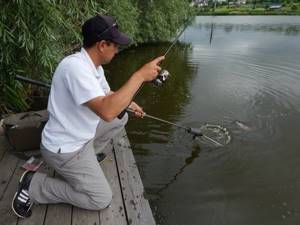
1. Reels 50-150$.
These are budget-friendly, but at the same time quite suitable for comfortable and successful microjig fishing.
And the less delicate the microjig, the lower the chances that a budget reel will fail. Actually, such reels are most justified in situations where ultra-long fishing distances (from 40 m) or the use of very light baits (up to 2 g) are not required. The main differences between budget microjigging reels and more expensive ones are that budget ones are noticeably more massive, heavier in operation and are capable of dropping loops more often under certain unfavorable conditions. 2. Reels $200-400.
These are much more suitable products for delicate fishing and sometimes only they are able to give real harmony to microjig. Having tried a lot of both expensive and budget microjigging reels, I can say that the number of fish I caught did not change much after switching to Japanese reels. However, with more expensive ones, the pleasure of fishing has increased and many other good things have come... These are cool things after all.
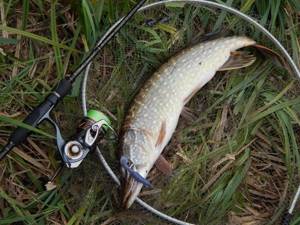
In this regard, the correct microjigging reel should be small-spool. It’s better not to forget this little detail, otherwise you’ll have to painstakingly wind the backing and carry it all with you on every fishing trip. About cords.
Microjig cord (braid) is also very important for the harmony of the tackle. And if in bark, and especially in heavy jig, the range of line thicknesses is very large, then in microjig everything is much more clear. I would highlight three options.
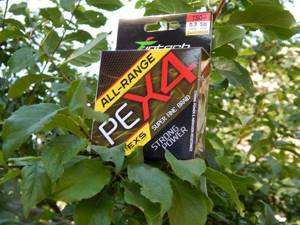
1.
When fishing with light jigs (up to 2-3 g) and corresponding miniature baits, cords with a conditional thickness of #0.3 are considered the best.
This Japanese unit of measurement indirectly characterizes the equivalent diameter of the cord through the amount of material per unit section. Typically, the breaking load of such braids is only 2-3 kg, but in most situations this is quite enough. 2.
When fishing in the middle range with microjigs (3-6 g) or in situations where the strength of the tackle is important, it is best to choose #0.4 line (3-4 kg). This thickness (and at the same time strength) will allow the line to easily slide along the rings and not break during long-distance casts.
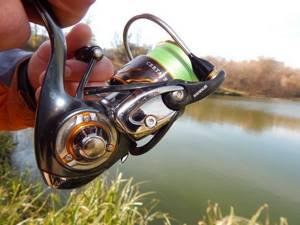
3.
In situations where it is impossible to be delicate with fish (snags, grass) or when we are talking about hunting for normal-sized predators (from 1 kg), it is logical and correct to wind the cord #0.5, and sometimes #0.6. Of course, the lightness and elegance will be disrupted, but this is much better than constantly losing bait and fish. As for the prices for microjigging cords, the situation here is not as rosy as, say, in regular jig or twitching. It’s just that for all cord manufacturers, the most expensive ones are the minimum diameters. And not because a boycott has been declared on the “people's microjig,” but because the thinner the cord, the more complex and responsible the technology for its production (hence the high price). Of the truly tested and proven cords, I would like to mention YGK UpGrade Pe, Intech All-Range X4.
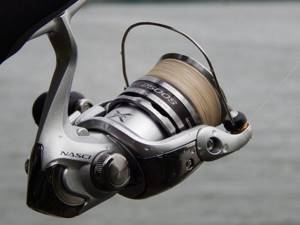
In general, a beginning spinning angler needs to be extremely careful and not mindlessly chase cheap microjig lines. This is almost always a trap. The fact is that the price of such a cord is only slightly lower than a high-quality one, but the characteristics, after 3-4 fishing trips, noticeably sag. But microjig tackle already has modest power. By and large, cords priced at $30 for 150 m can be safely considered worthy, and the risk when purchasing such a product is moderate. From practice, I can say that a high-quality microjig cord will last much longer (1.5-2 times) than a budget one, and will not fail at the most crucial moment. The service life of a normal cord is no less than a season, often two. Cords vary in the number of cores. Of course, the more lived, the better the braid, but also more expensive. As my practice and the experience of my comrades shows, already 4-core cords, if they are from a well-known manufacturer, have almost the same basic characteristics as much more expensive eight-core ones.
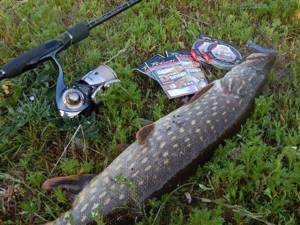
More good fishing and real trophies, dear microjigits!
Heading:
Spinner's Guide
The best braided cords in terms of price-quality ratio
Power Pro Moss Green
Rating: 4.9
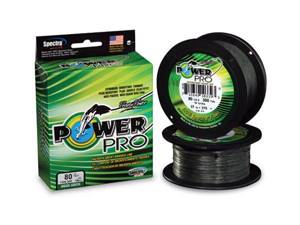
The eternal competitor Sufix 832 appeared before users in the guise of Power Pro Moss Green, combining the same principles, but under a “cooler” look. To begin with, it is worth noting that this series fits as many as 16 standard cross-sectional sizes, ranging from small 0.06 to colossal (marine) 0.89 millimeters. This variety allows for a wide variety of spinning (or casting) fishing methods, giving anglers a ton of versatility. Zero stretch and no memory effect make Moss Green ultra-sensitive, so you can be sure that not a single weak bite will go unnoticed.
The fact that the internal resource of the braided cord of this model is designed for 4-5 years of successful use did not go unnoticed by fishermen. Due to the low acquisition costs (this is certainly true in the version with small sections), the consumer will receive 135 meters of the most competitive braided fishing line, sharpened to achieve exceptionally high results.
Advantages
- the widest series in the selection (as many as 16 sections are available);
- the highest load parameters (from 3 to 125 kilograms);
- zero stretchability, which has a positive effect on sensitivity;
- no memory effect;
- high-strength components;
- low price.
Flaws
- not identified.
How to choose the right fishing line
There are several main parameters that influence the choice of braided cord for fishing, namely:
- Color. For stagnant and salty water, blue is suitable. But in Russia there are few such reservoirs, so it is better to use green. When planning to catch predators, color is not important. It is better to choose bright colors so that you can clearly see the fishing line. Yellow or multi-colored items will be optimal.
- Diameter. Information about him is listed above. But it is worth understanding that the table is average; the exact values depend on the technology used to create the braid. In any case, it is worth buying with a margin of safety.
- Footage The standard footage is 150 meters. But there are manufacturers who offer more or less than this length.
Thus, you need to carefully select your fishing rod. It is important to remember that it is suitable exclusively for summer fishing. In winter it can be used, but the fishing line will quickly lose its properties.
During winter fishing, it is better to use regular fishing line. It is thinner, but less susceptible to the negative effects of cold water.
The best braids for twitching wobblers
- Duel Hardcore X8
For me personally, this braided line is a real discovery of the past season, and it’s not for nothing that it topped this rating. I used the 5-color version in size #1. The color changes every 10 meters, which is very convenient. I did not find any serious shortcomings during the season of active use. The braid is very thin and durable, with good flight properties. The price is steep - about 2800 rubles for 200 meters and finding it in stores is quite problematic.
- Daiwa Tournament Braid 8X
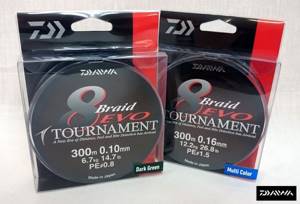
A perfectly round and soft thread that flies wonderfully and does not try to fray. It is chosen by many athletes and fishing professionals. This thread will be good for both wobbler and jig fishing, but only in places where there are no shells and sharp stones - this is its weakest point. Another significant drawback of the model is its high price on the Russian market - about 3,000 rubles for 135m, which makes it out of reach for many fishermen.
- YGK G-Soul Upgrade X8
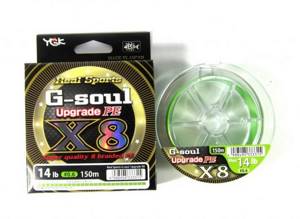
An eight-core cord, which is positioned by the Japanese as universal, but I will single it out specifically for twitching fishing, because... There are much more practical and suitable options for jigs. Its casting range and accuracy are excellent, thanks to its smooth coating. Presented in bright green with white markers every meter. Unwinding - 150 and 200m.
- Power Pro Super 8 Slick
A good 8-core from an American manufacturer. It is distinguished by its softness and higher weaving density, relative to usual. The advantages include high strength of the cord and good throwing qualities. Among the disadvantages - there is a high chance of buying a fake, discrepancy with the declared thickness
- Sunline Super PE
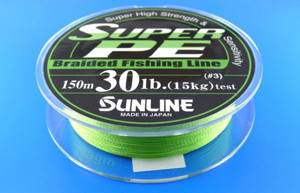
Budget braided line, but it has proven itself well among undemanding and novice spinning players. Supplied in unwinding lengths of 150 and 300 meters. Among the disadvantages, there is a very high probability of falling for a fake; many people complain about its coloring properties. Its characteristics are reminiscent of the good old Power Pro.
Types of braided lines
There are 2 types of braided cords for ultralight:
- braided cords;
- cords soldered by heat treatment.
Braided braids are characterized by noticeable softness, and therefore they are often called conditionally tensile. As for soldered cords, such products are characterized by a high level of rigidity and absolute inextensibility.
However, during active use, rigid fishing lines can become covered with microvilli and slightly increase in diameter. Such changes have virtually no effect on strength, but the line gains extra windage, which can result in a decrease in casting distance.
Braided cords can have different weaving densities, which also affects the strength parameters and elongation.
Ultralight tackle consists of: a light spinning rod, a small reel, thin braid and light bait. If you are interested in choosing ultralight reels, read the article “reels for microjigging”; the article contains a rating of reels and approximate prices for them.
Next, we will talk about specific models of braided cords for ultralight fishing, which are the most popular and have received positive feedback from fishermen.
For what purposes can braids be used?
Braid is a strong and reliable fishing line consisting of several threads. It can be used for the following purposes:
- Long-distance casting support;
- Low windage rates when fishing in windy weather;
- Increasing the level of bait sensitivity;
- Provides the best visibility in the water for some types of fishing;
- Prevents stretching during sharp hooking;
- Duration of service life.
One of the main advantages of braided fishing line for fishermen is its simplicity and long-term storage. It can be bought in reserve and stored for five years. After which it will not lose its characteristics. Moreover, when wound on a drum, it will still retain its shape. The braid includes the following components:
- Weaving from several layers;
- A substance that prevents rapid wear of gear;
- Impregnation used to improve the slip of fishing line in water;
- Impregnation from harmful sun exposure.
Line diameter for pike
For pike fishing, a fishing line with a diameter of 0.22 to 0.35 mm is usually used. The thickness of the fishing line depends on the mass of the fish that lives in the reservoir. If the reservoir is not fished and it is not known what kind of “monsters” live in it, then it is recommended to take a fishing line with a diameter of 0.25 mm. This is the “golden mean” for modern spinning tackle. On the one hand, a line of this diameter allows you to make fairly long casts, on the other hand, it can withstand high tensile loads (about 6.5–7.5 kg, depending on the manufacturer). This line will allow you to pull out a pike weighing 4–6 kg.
Braid for spinning: how to choose the diameter
Many fishermen are confused about what diameter of braid to choose for a spinning rod. There are average indicators that allow you to understand which parameter should be chosen in a particular case.
Table. How to choose the diameter of the braid
| Diameter (mm) | Weight supported (kg) |
| 0.1 | 3.6 |
| 0.12 | 4.5 |
| 0.14 | 6.7 |
| 0.16 | 9.1 |
| 0.18 | 9.7 |
| 0.2 | 11.4 |
| 0.23 | 13.6 |
| 0.26 | 14.4 |
| 0.28 | 15.9 |
| 0.3 | 17.11 |
| 0.32 | 18.2 |
| 0.35 | 20.4 |
Important . When thinking about what diameter to choose for a spinning rod, you need to consider who you plan to catch. It is also necessary to take into account that it is impossible to achieve the same diameter along the entire length of the fishing line. Therefore, it is recommended to buy with a small margin if you do not want to lose your catch due to torn fishing line.
Salmo Elite Braid
Relatively inexpensive fishing line with good quality indicators from the famous Polish company Salmo. For ultralight, a model with a diameter of 0.09 mm is suitable. This braid is made from a special fiber Dyneema SK65, which is given even greater strength by additional processing. The cord is not too soft, but you can’t call it very hard either.
It is characterized by very good sensitivity, which, when used in an ultralight, will allow you to comfortably control the bait even at long distances. Available in two colors (yellow and green), in reels from 91 to 1000 m. The first suitable option for braided line for use in ultralight equipment.

